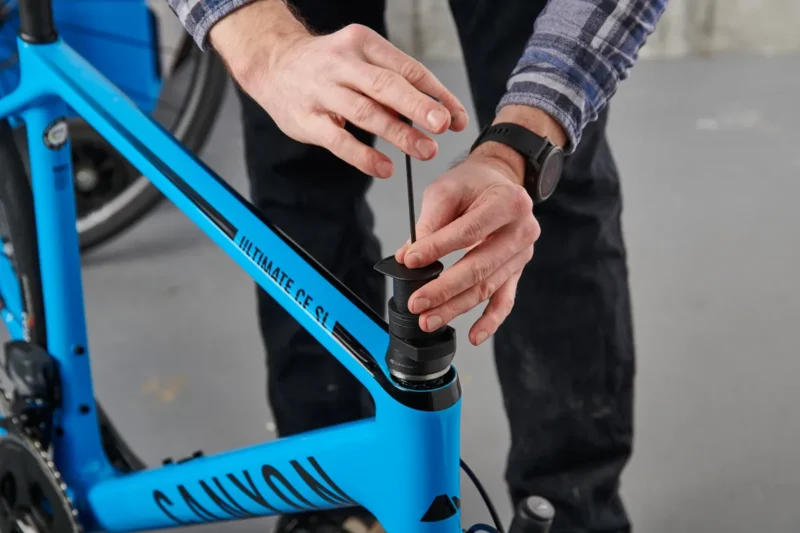If you’ve just bought a bike online or from a shop that doesn’t offer assembly, you might be asking yourself if it’s worth paying a bike shop to put it together. Sure, you could try doing it yourself, but without the right tools or knowledge, things could go wrong.
Bike shops take care of everything for you—so your bike is safe to ride and performs as it should. But is it worth spending the money on professional assembly, or is it something you should tackle yourself?
Let’s break it down and see what makes sense.
So, Do Bike Shops Assemble Bikes?
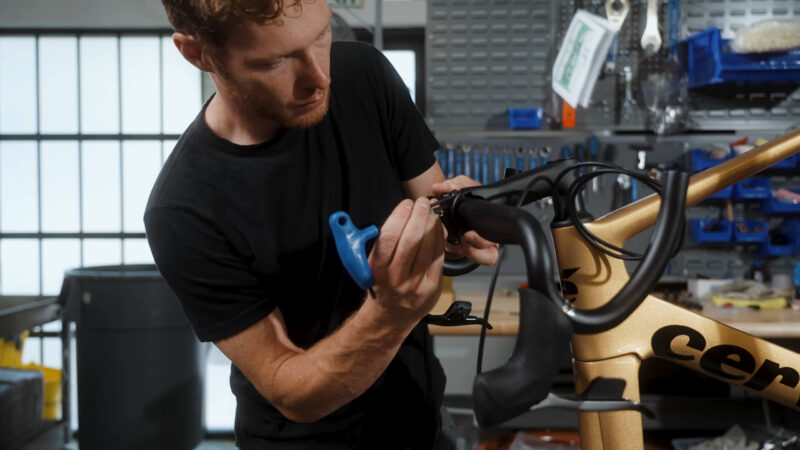
Yes, most bike shops assemble bikes, whether you buy them directly from them or from an online retailer. Bike assembly involves putting together everything from the frame to the wheels, handlebars, and seat. Mechanics also fine-tune parts like brakes, and gears, and ensure all components work smoothly.
If you bought the bike directly from the shop, they often include the assembly at no extra charge. However, if you ordered it from somewhere else, like an online retailer, most shops charge a fee, usually between $50 and $200.
For example, Kozy’s Cyclery in Chicago charges anywhere from $45 to $149.99, while Mike’s Bikes in California goes up to $180 for assembly.
Beyond just putting the bike together, shops can also help with extras like installing accessories (pedals, mounts, etc.) and offer additional adjustments if needed.
What Does Bike Assembly Include?
When you pay a shop to assemble your bike, it’s more than just attaching a few parts. They focus on ensuring everything is installed correctly, safe to ride, and tuned for smooth performance.
Unpacking the Bike
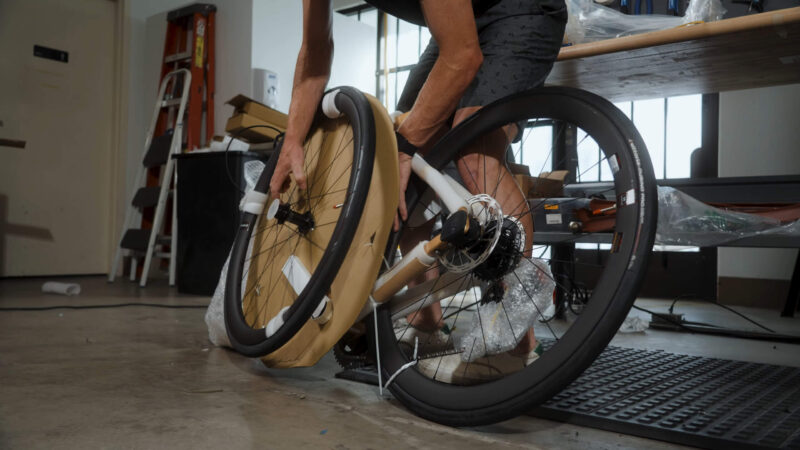
The first step is to unpack the bike, especially if it’s been shipped in a box. Shops lay out all the parts, including wheels, handlebars, seat, pedals, and smaller components like cables and bolts.
Attaching the Main Parts
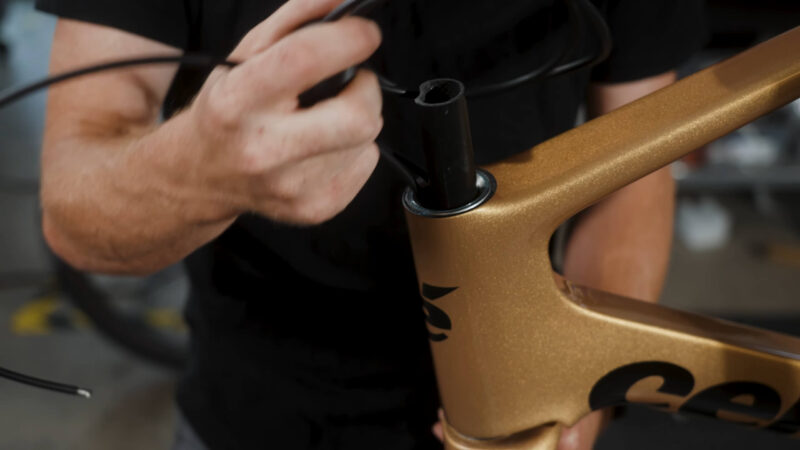
Mechanics start by assembling the bike’s frame, wheels, seat, handlebars, and pedals. Everything is securely attached and aligned. Wheels are centered, and the bike tire liners we have already discussed are installed, handlebars are straight, and pedals are installed correctly based on the rider’s needs.
Adjusting Brakes and Gears

This is a crucial step. The shop ensures the brakes are working properly and adjusted for safety. Gears are tuned so they shift smoothly without any issues. This is especially important on multi-speed bikes.
Tightening and Testing
Mechanics go through and check all bolts to make sure nothing is loose. They use tools like torque wrenches to tighten everything to the correct specifications, reducing the risk of future issues.
Safety Check
In this video, James Tennant from BikeRadar will explain how to check the safety of your bike
After everything is put together, the shop performs a safety check. This includes inspecting the brakes, checking the tire pressure, and ensuring the gears work without any problems.
Some shops also offer to fit the bike to your body size and riding style, adjusting the seat height or handlebar angle if necessary.
More About the Prices
The cost of having a bike assembled at a shop can vary depending on the location, the complexity of the bike, and whether you bought the bike directly from the shop or brought it in from somewhere else. Here’s a breakdown of what to expect:
- Basic Assembly: Most shops charge between $50 and $150 for assembling a standard bike. This includes putting together the frame, attaching the wheels, adjusting the brakes, and making sure everything works smoothly.
- Complex Builds: If you have a more advanced bike, like an electric bike or one with specialized components, the cost can be higher. For example, Mike’s Bikes in Palo Alto charges up to $180 for more involved builds, while some shops like Bicycle Habitat in New York may charge up to $350 for a custom bike build.
Is Paying for Assembly Worth It?
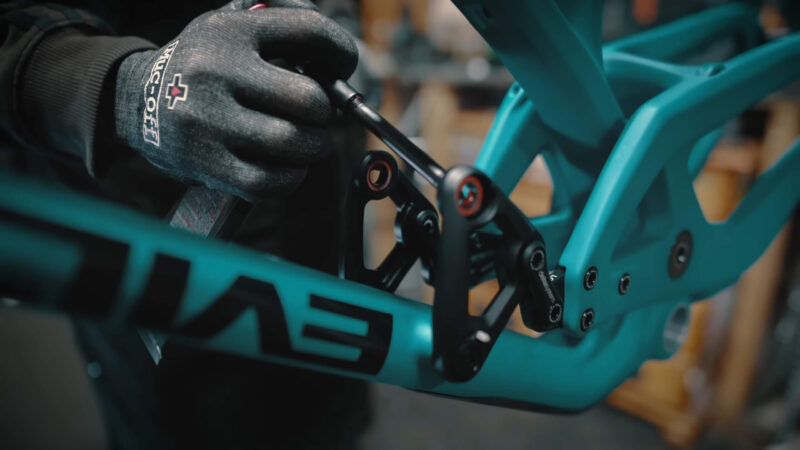
Whether or not it’s worth paying for professional assembly depends on a few important factors.
Your Experience
If you’re not confident with bike mechanics, then it’s definitely worth paying for assembly. A professional ensures that everything is put together correctly—making sure the brakes work, the gears are smooth, and the wheels are aligned.
If you’re unsure, leaving it to a pro avoids potential safety risks that come with incorrect assembly.
Tools
Assembling a bike requires specific tools, such as torque wrenches, cable cutters, and pedal wrenches. If you don’t already have these, buying them could cost you more than paying for assembly.
Using the wrong tools could also damage the bike, so it’s worth thinking about whether you want to invest in tools or let the shop handle it.
Time
Bike assembly can take a few hours, especially if you’re new to it. If you’re short on time or don’t want the frustration of figuring out how to install everything, paying for assembly makes a lot of sense.
Shops can do it faster and ensure everything’s good to go when you pick it up.
Bike Complexity
For more basic bikes, like single-speed or mountain bikes, assembly can be straightforward if you follow instructions. But for high-end bikes with complex components—like electronic gears or hydraulic brakes—it’s better to trust a professional.
These bikes require precise adjustments that are tough to get right without experience.
Should You Assemble Your Bike Yourself?
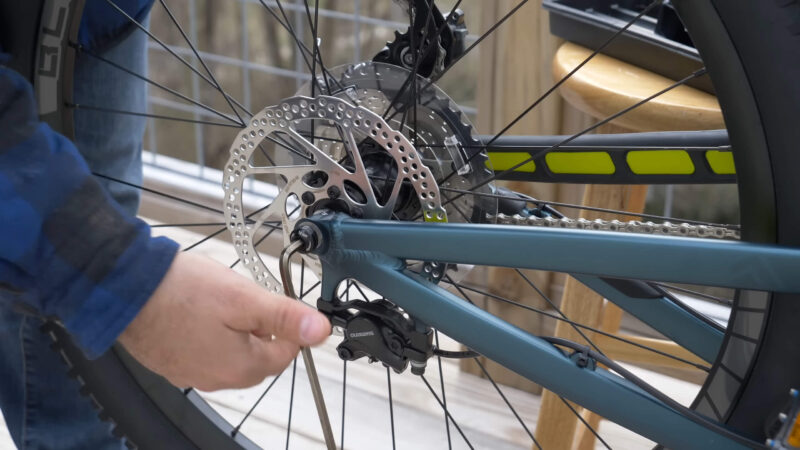
The answer here is similar to the previous section. It depends on your skills and experience. The point is that you should avoid playing around with tools if you are not sure that you will assemble them in the right way.
- Your Skill Level: If you’ve got some experience with bike maintenance or mechanics, assembling it yourself could be a fun project and a way to save money. However, if you’re new to it or don’t feel confident, it’s better to leave it to the pros. Misaligning parts or not tightening bolts properly can lead to safety risks down the line.
- Tools You Have: If you already have the necessary tools (like a torque wrench, pedal wrench, and cable cutters), doing it yourself could be more cost-effective. But if you don’t have them, buying everything could easily outweigh the cost of paying a shop to do it. Specialized tools are needed for certain tasks like adjusting brakes or installing pedals.
- Time and Patience: Bike assembly isn’t always a quick job. For someone new to it, the process can take hours. If you’re short on time or don’t want to risk getting frustrated with it, professional assembly might be the better option. It ensures your bike is set up right from the start without you having to worry.
- Type of Bike: The complexity of your bike matters. A simple mountain bike or hybrid can be manageable for most people. But if you’ve got an electric bike, a high-end road bike, or a bike with complex gearing and braking systems, DIY might not be worth the headache. These types of bikes require precision and experience to assemble correctly.
FAQs
What if I only need a few parts assembled on my bike?
Most bike shops are flexible and can help you assemble specific parts instead of the whole bike. You can bring in just the wheels, brakes, or any other part you’re struggling with, and they’ll help you out for a fee. It’s a good idea to call ahead and ask about pricing for partial assembly.
How long does bike assembly take at a shop?
On average, a bike shop can assemble your bike within a day or two, depending on how busy they are. If the shop is packed, it might take a little longer, so it’s best to schedule an appointment or call in advance to avoid delays.
Can bike shops make adjustments after assembly?
Yes, most bike shops will offer follow-up services. If something feels off after riding your newly assembled bike, you can bring it back for minor adjustments like tweaking the brakes or adjusting the seat height. Some shops even offer free adjustments within a certain period after assembly.
What if something breaks during the assembly?
If a part breaks during assembly at a shop, they’ll likely replace it or help you order a new part, though you may have to cover the cost of the replacement. Always check with the shop for their policy on damaged parts during assembly.
Can I watch the assembly process at the shop?
Many shops allow customers to watch the assembly, though some prefer to work without distractions. It’s best to ask if you’re curious about seeing how it’s done, but be prepared for the possibility that some shops may not permit it.
Do bike shops offer warranties on their assembly services?
Most bike shops provide some sort of guarantee or warranty on their assembly work. If something goes wrong due to improper assembly, they will typically fix it free of charge within a specific time frame. Be sure to ask about their policy when you drop off your bike.
Last Words
Professional assembly offers peace of mind with expert craftsmanship and additional services, while DIY can save money if you have the necessary skills and tools. Weighing these factors will help you make the best decision for your situation.
